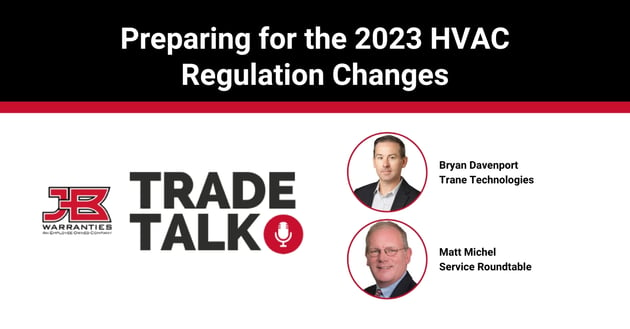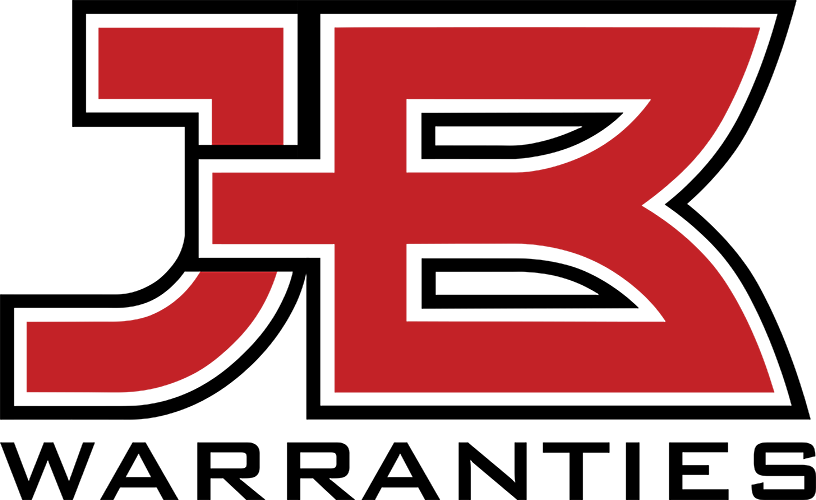
We've been talking about the upcoming HVAC regulation changes recently, and we've got some more experts joining us to dig into what's to come. Matt Michel from Service Roundtable and Bryan Davenport from Trane Technologies sat down with Tommy Cue to discuss the changes.
-
Expected changes
-
Efficiency and testing changes
-
System match-up changes and ratings
-
Existing inventory
-
Expectations for number of units sold in 2023
-
Equipment pricing
-
How to prepare
Connect with Tommy, Matt, and Bryan:
Host:
Tommy Cue, JB Warranties
Guest:
Matt Michel, Service Roundtable & Bryan Davenport, Trane Technologies
Read the transcript:
Tommy Cue:
All right. Thank you. Tommy Cue with JB Warranties here for another edition of JB Warranties Trade Talk. I'm thrilled to be joined today to go over the 2023 Department of Regulation changes for the HVAC industry. I'm joined by Matt Michel. Matt, thank you very much, sir. I appreciate it.
Matt Michel:
Thank you.
Tommy Cue:
Joined by Bryan Davenport as well, with Trane Technologies. Bryan, thank you so much.
Bryan Davenport:
Glad to be here.
Tommy Cue:
Before we get started, Matt, if you don't mind, tell me a little bit about your storied career within the HVAC industry.
Matt Michel:
Well, like I said, I'm a recovering engineer, which is why I'm charismatically challenged. I did what all mediocre engineers do, at some point I moved into marketing so I could tell all the engineers what to do. And rose up through the manufacturing ranks and then through the contracting ranks. Currently, I'm the president of Service Nation, which operates Service Roundtable, retail contractor coalition Service Nation Alliance, Roundtable Rewards Buying Group and Service World Expo. That will last for another three or four weeks and then I'm going to step down and just be a writer and speaker.
Tommy Cue:
Nice. Thank you so much for your time today. Bryan, congratulations on the new promotion.
Bryan Davenport:
Thanks so much.
Tommy Cue:
A little bit about you if you don't mind, please sir.
Bryan Davenport:
Sure. I've been with Trane Technologies now for about 20 years. My current role, I'm the vice president of our independent distribution channel supporting our residential distributors for Trane, American Standard, RunTru & Ameristar.
Tommy Cue:
Nice. Thank you so much. It's been a great year. We've all had some great success over the last couple of years. We've got some changes coming for 2023, Matt. Basically the Department of Energy is raising the standards and if you don't mind, can you go through a little bit of that, what we're going to be faced with?
Matt Michel:
Sure. So briefly what happened was the DOE took advantage of a clause that was in the Energy Policy and Conservation Act of 1975 and so that they said that they needed to produce test results that measure the energy efficiency during a representative average use cycle. Well, our testing has been the same and it's just to establish a baseline for comparing one unit to another. There's no way that it represents average use cycle. It was never intended to, but they use that as an opportunity to raise the downstream static pressure, which units are tested with to also increase the fan speed that units are testing with or the fan horsepower. So in essence, what they've done is they've managed to bump the efficiency levels up and they've applied it on a regional basis and it applies primarily in the south and then some in the west.
The north is largely exempt. For some reason, packaged equipment is largely exempt and then many splits are exempt because again, they don't have downstream duct work. So they were able to avoid the static pressure requirements. The net result of all this is equipment is going to be bigger, it's going to cost more. And we're looking at anywhere from an 18 to 25% price increase for the contractors, which hopefully all will pass along to the consumers. This will further impact the industry. It'll make us a little bit more profitable because we will have more revenue with less installations because we're still facing that shipment cliff where we're seeing a historical trend of installations dropping off.
So more revenue with less installations and the result will be greater net profit. So it'll be a profitable year for the industry in 2023, even more than it was in 2022, which is going to be a record year. There are other implications which we can talk about later from this, but primarily it's regional and it affects the southeast and west more than it does the north. And I think every contractor by now should be aware from their distributors on what to do and how to impact it and clean up their inventory levels. If not, there's going to be some deal cutting shipping units up north.
Tommy Cue:
So if you recapped it in short version, we're basically going from a minimum of a SEAR of 13 that we've been accustomed to now for several years and we're going to a SEAR 2, which is a new testing philosophy that's going to raise the SEAR to starting at about 14.2, 14.3 depending on geography.
Matt Michel:
Yeah, we're going to end up really with 15 SEAR. So 14.2 SEAR, and we're going to have a 14.3 I think SEAR 2, which is about a 15 SEAR under the old testing standards. I think it's a 12.7 EER. It is going to be the same as an 11.7 EER 2 and then an 8.8 HSPF will translate to a 7.5 HSPF 2. So the heating load is going to go from 65 degrees Fahrenheit to 55 degrees Fahrenheit, default motor watts from 365 to 441. I mean, bottom line in all this is we're making equipment more expensive. We're raising base efficiency levels.
Tommy Cue:
So that brings in Mr. Bryan Davenport of Trane Technology. Bryan, Trane has well positioned themselves it looks like from my side, looking in for 2023. Can you recap what Trane's done to address these DOE regulation changes?
Bryan Davenport:
Absolutely. We've been preparing for these changes for well over a year now. So these efficiency changes and new testing standards we've been developing our product portfolios to make sure that our distributor and dealer contractors are prepared when those go into effect on January 1st of next year. So as we think through that, that requires us to communicate to our channel what the new portfolios look like and then what the new ratings will be. And so we've been doing that over the course of the summer to make sure we educate our dealers and distributors on the new standards, but also what our new system matchups will look like. Because those will be changing. As Matt talked about, the minimum efficiencies going to go up. So that requires in many cases new ratings on the entry level of products. Within our portfolio, the higher end efficiencies are largely unchanged but will require new ratings with the new SEAR 2 efficiencies.
But that portfolio looks very much the same. It's really on the entry level side of the equation where you're going to see the most changes that will be coming. Our distributors have cycled through their existing inventory primarily in the south, so that come January 1st, they'll have those products that are available. Because that's the biggest difference when it comes to the regional standards is the southeast and southwest regions have that requirement from an install or date perspective where they must change over and begin installing new products January 1st. In the north, it's based on manufacturer date, so they have the opportunity to sell through that product well into 2023.
Tommy Cue:
Will you see some of your distribution channels ship product or sell product to call it friendly distribution partners throughout the United States?
Bryan Davenport:
That's absolutely a possibility. I think we've seen that some cases before, but what I've been really pleased to see is a proactive preparation, not only our side but also our distributor's side to make sure that they're managing through that inventory. So that will be very minimal. But I do expect that there's going to be some that will happen after the first of the year.
Tommy Cue:
The market's changing quite a bit. Do you see 2023 setting up to be a growth year and numbers of units sold? Both of you can answer. Or do you think it's going to level off and flatten down a little bit? We just go back from Harding, and I got some really good insight with what they expect. What do you think Matt and Bryan?
Bryan Davenport:
I'll jump in first. So obviously I think there's a lot of uncertainty on the horizon from a demand perspective as we enter 2023. I think there's some general sense that there's some softening in the market and so we'll look and see how that impacts it. I think with what we talked about earlier with price, these new systems will cost more. So I think that's going to protect a lot of dealers and distributors top line revenue, but it may end result in short term fewer boxes being sold.
Matt Michel:
We have to look at RNC, residential new construction as well as add-on replacement. If we look at the RNC market, of course all the projections are that housing starts are trending down. As interest rates rise, there's going to be fewer new construction installations. Then on the replacement side, we know in the past everything else being equal, we know in the past that when we had the first minimum appliance efficiency standards act go into place, we saw a flattening of shipments on the replacement side and then we saw the same thing happen when the 13 SEAR was implemented. So we know if it's happened before, we can expect it again. So what's going to happen is there's a little bit of sticker shock and consumers will defer replacements a year or two if they can. That's especially going to be the case because we've had plenty of price increases over the last year due to some of the supply chain issues. And then adding another 20, 25% on top of that is certainly going to have an impact.
My projections are that we are still facing the shipment cliff where we saw a record contraction of 40% from 2005 to 2009 and that has not worked its way out. The only reason it's not more apparent to us is because the price increases that we saw hid the decline in installations because revenues went up because revenues were greater than decline in the number of units sold. So we think that that will continue this year. Overall revenue will be up while the number of installations on the service and replacement side will be down. On the new construction side, we are looking at a decrease.
Tommy Cue:
So bottom line, we know the prices are going to go up. That's a given. The market's going to level, stay pretty level. Dealers need to be prepared. Any advice you've got for contractors coming right around the corner because it's a big shift. I mean we're talking contractors got to change.
Bryan Davenport:
Yeah, I would say make sure the requirements in your market and make sure you're communicating those benefits to your customers. These are changes that you're not choosing to make on your own. So make sure that you're educated and informed on what those are to make sure you're passing that onto your consumers as well. And make sure you're passing on those increases that come with changes and efficiency standards. Don't let that compromise your margins in the process. Make sure you're protecting yourself along the way.
Tommy Cue:
Nice. Any closing words there, Matt or Bryan? I appreciate it very much.
Matt Michel:
Well, I think Bryan is exactly right and I think the thing that we need to really stress is communication with the customer base and that can't be stressed enough. I would go to back to manufacturer websites and use those because all the manufacturers have good information that explains this and that can help show this to consumers. This is not just you as a contractor trying to pull something off on them. This is something that our friendly government has done for everybody. I think the one thing that contractors need to be really aware of is the record keeping requirements because they've got to maintain their AHRI matches and they got to maintain them for four years.
Distributors have and manufacturers have to retain them even longer. So you better establish a process for that now. Make sure that you've got them on hand for every installation that you perform starting January 1st going forward. Because if a disgruntled employee, if a competitor, if anybody turns you in or claims that you are not adhering to the new efficiency standards and the DOE comes in and takes a look at this, you have better be able to justify it because you're guilty until proven innocent.
Tommy Cue:
Well, that last statement's pretty key. So again, thank you guys very much. I appreciate it so much. Again, another edition of JB Warranty's Trade Talk. Thanks and have a good evening.







